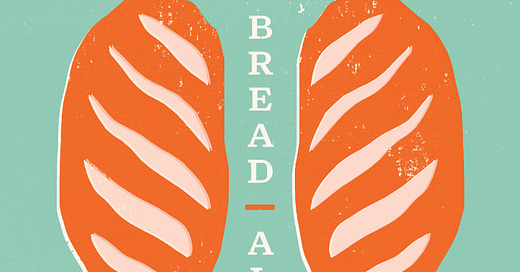The God who feeds, an author interview
Kendall Vanderslice talks with us about her new book, By Bread Alone
Gentle reader,
Today, I get to bring you an interview with
, author of the new book By Bread Alone: A Baker's Reflections on Hunger, Longing, and the Goodness of God. The book is a theology of bread. How great is that?!? Below, after the interview, you’ll also find an exclusive excerpt from the book.Keep reading with a 7-day free trial
Subscribe to Church Blogmatics by Beth Felker Jones to keep reading this post and get 7 days of free access to the full post archives.





